Driving innovations in wireless torque measuring technologies
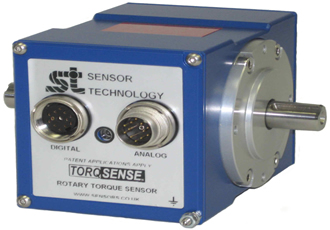
Sensor Technology has continued to develop its product range, offering users new options for measuring power in drive shafts and other rotating machine elements.
A technological breakthrough has occurred in the world of sensors that will almost certainly grab the attention of machine designers who are looking to measure power in drive shafts and other rotating machine elements.
Measurement of torque in rotating shafts is a fundamental requirement in a vast number of applications. In production machinery and processes measurement of torque can help to reduce downtime and improve product quality, and is a key measurement in the battle to optimise energy efficiency. In applications such as belt conveyors, measurement of shaft torque provides an efficient means to monitor the power being used to drive the conveyor, which in turn can help to optimise speed.
Accurate torque measurement is also vital in many R&D applications to test system characteristics or evaluate system performance. Direct torque measurement is preferred in such critical applications over remote or indirect methods of calculating torque as it is inherently more accurate and reliable.
Regardless of type, the job of the torque transducer is to convert torque into an electrical signal. On a rotating shaft, this equates to monitoring the minute differences in twisting from one end of the shaft to the other, and turning this into a usable output.
Conventional torque measuring solutions for rotating shafts introduce as many problems as they solve. Strain gauges require connection to the outside world via slip rings, inductive couplings or rotary transformers which can all represent a compromise in terms of factors such as electrical noise, long term reliability, speed range, accuracy, etc. Phase measurement or magnetic measurement techniques are also available, but introduce compromises of their own.
Sensor Technology’s solution in the core of its TorqSense products is to use the properties of surface acoustic waves, by measuring the resonant frequency change of surface acoustic wave (SAW) devices in a non-contacting manner when strain is applied to a shaft to which SAWs are fixed. The applied torque causes a deformation of the quartz substrate of the SAW device, which in turn causes a change in its resonant frequency.
Practical torque sensors use two tiny SAWs made of ceramic piezoelectric material containing frequency resonating combs. These are glued onto the drive shaft at 90 degrees to one another. As the torque increases the combs expand or contract proportionally to the torque being applied. In effect the combs act similarly to strain gauges but measure changes in resonant frequency.
The adjacent RF pickup emits radio waves towards the SAWs, which are then reflected back. The change in frequency of the reflected waves identifies the current torque. This arrangement means there is no need to supply power to the SAWs, so the sensor is non-contact and wireless.
Sensor Technology’s SAW-based torque sensors produced using this technique are bi-directional, with fast mechanical and electrical responses. There is complete freedom from brushes or complex electronics, and none of the drawbacks of phase measurement or magnetic measurement technologies.
One of Sensor Technology’s breakthroughs as it developed the TorqSense range was the ability to deliver a highly compact device yet which had all the complex electronics placed within the transducer itself. The high level of integration was key in allowing the company to radically reduce the overall size of the sensor. This innovation formed the basis of the RWT310/320, a significant development over the previous 300 series.
New TorqSense RWT models
Of course the innovation never stops, and Sensor Technology has continued to develop the technology, with new models offering improved performance and suitability for new applications. The RWT310/320 has now been superseded by the TorqSense RWT410/420, with all new electronics that have produced significant performance gains in resolution, frequency response, reduced sensor current consumption and faster digital data throughput. Further, transducer overload has also been increased to 300%. The series offers a cost effective, non-contact digital rotary torque measurement solution, suitable for torque monitoring, testing or controlling drive mechanisms.
Recognising that some applications might benefit from having the electronics separate from the sensor unit due to space and/or environmental limitations, Sensor Technology has also developed the RWT430/440, replacing the RWT330/340 series and again featuring all new electronics that have produced significant performance gains in resolution, frequency response, reduced sensor current consumption and faster digital data throughput.
Another important feature of the new devices is that Sensor Technology has been able to increase torque ranges from 1Nm to 13,000Nm, with even greater torques available on request. In addition, the safe mechanical overload limit for the transducers has been increased to 300 percent
The increased torque capability means the new models are suitable for monitoring, testing or controlling drive mechanisms in some of the largest and most demanding applications, including marine, agricultural, renewable energy, offshore and materials handling, aerospace and other heavy duty tasks.
A further innovation is the TorqSense RWT450/460 pulley/sprocket torque sensor, again offering performance gains over the previous RWT350/360 range and offering a cost effective option for torque monitoring and process control on any belt/chain driven machinery. The devices offer separate electronics and sensor either with fixed outputs (RWT450 Series) or user selectable outputs (RWT460 Series).
All of the models in these ranges are able to operate both statically and dynamically, in both clockwise and anti-clockwise directions, providing accuracy to 0.25 percent and resolution to 0.02 percent. Features include integrated sensors to monitor shaft temperature for improved compensation and accuracy, and an integrated LED status light and ‘sensor status’ output.
TorqSense transducers have long offered a range of interface options including RS232, CANbus and USB to connect with modern instrumentation and laptops. But a new option is a Bluetooth interface box that introduces a new level of wireless flexibility by enabling the sensor to be used in applications where cabling would be difficult and/or by providing to ability to monitor the sensor on any Bluetooth enabled device. This might include a smartphone running Sensor Technology’s Android app to display the current torque, speed and temperature as well as peak values.
Optical rotary torque sensing
While SAW-based torque sensing provides a highly attractive option for the vast majority of rotary torque measurement applications, there are other tasks that require either a much lower torque range than suits the SAW technology or a much higher bandwidth.
Here, optical rotary torque sensing is a better option. Optical rotary torque sensors use a pair of gratings attached a short distance apart on a strain-sensitive shaft to modulate a light source. As torque is applied to the shaft, a slight twist results which changes the alignment of the gratings and thus varies the light transmitted through to a detector. The use of this technique results in a transducer which is able to detect torque bi-directionally, and which has a fast mechanical and electrical response, low inertia and complete freedom from brushes or complex electronics.
Sensor Technology has set new benchmark performance standards for optical rotary torque transducers, with the launch of the digital ORT 230/240 series, providing precise, dynamic measurement of rotary and static torque less than 100Nm and for bandwidths of up to 50kHz.
The new ORT 230/240 devices replace Sensor Technology’s E200 ORT series, benefiting from all-new electronics that deliver significant gains in resolution, frequency response, reduced sensor current consumption and faster digital data throughput. The high speed capability comes from an inherently low inertia, since the electronics are not fixed to the shaft, while non-contact operation ensures a long and reliable life (backed up by Sensor Technology’s lifetime warranty) with high accuracy. The optical operating principle also ensures excellent noise immunity.
LoadSense wireless load sensors
Identifying a need for new options within load sensors, Sensor Technology has evolved its wireless technology to develop the LoadSense range, with the capability of wirelessly transmitting its data to one of Sensor Technology’s compatible readouts and displays or recording its data locally. LoadSense employs internal batteries which make its operation completely autonomous. As such it can be deployed with minimal disruption in a host of applications, and will automatically begin transmitting data.
The LoadSense package includes the intelligent load sensor itself, plus a hand-held display and a receiver. The load sensor is based on proven strain gauge technology, and is calibrated as standard in the range 1-30 tonnes, with other ranges up to 100 tonnes coming soon. The transmitter (operating on an unrestricted 2.4 GHz waveband) enables accurate load data to be sent to the display – a full colour, TFT touchscreen computer, running the familiar Windows operating system and LabVIEW. The display provides real time measure of the load, while the computer records and processes real-time values.
LoadSense has proven itself in a range of demanding applications, and has been so successful that Sensor Technology actually identified a completely new market, and developed a variation of the LoadSense to address it. The result is the HeliNav LoadMaster – an intelligent wireless helicopter load sensor with inclinometer and accelerometer capabilities so that it can be used to measure large underslung loads. Load sensors are available in a range of sizes from 1 to 5 tonnes.
A complementary product is HeliNav TrackMaster, which gives helicopter pilots an easy to use and accurate system for line guidance. It also automatically records all data for post-flight downloading so that detailed analysis of the flight and operational performance can be completed for accurate billing, maintenance scheduling, etc. The HeliNav LoadMaster and TrackMaster systems can be used separately or in combination, giving helicopter operators complete weight and distance information for post flight analysis and billing.
With all of the latest additions to its range, Sensor Technology has now been innovating in torque measurement solutions and wireless load sensors for over 40 years, and has become an acknowledged leader in SAW technology. Operating from its state-of-the-art facilities in the heart of rural Oxfordshire, Sensor Technology also has a global network of distributors assisting sales and a network of world-renowned technical experts assisting the development of TorqSense and other technologies.
Similar articles
More from Sensor Technology Ltd
- Hydrogen fuelled car drives for efficiency world record 29th July 2020
- Wine growers gain vintage success with help of engineers 15th January 2019
- Wireless torque measurement at the heart of distribution network 12th December 2018
- Measuring torque without slip rings 19th November 2018

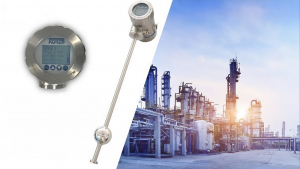
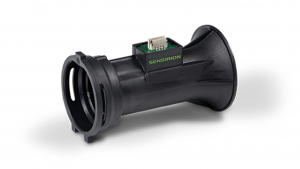
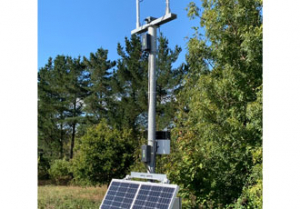
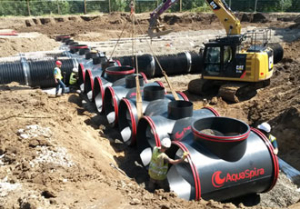







Write a comment
No comments